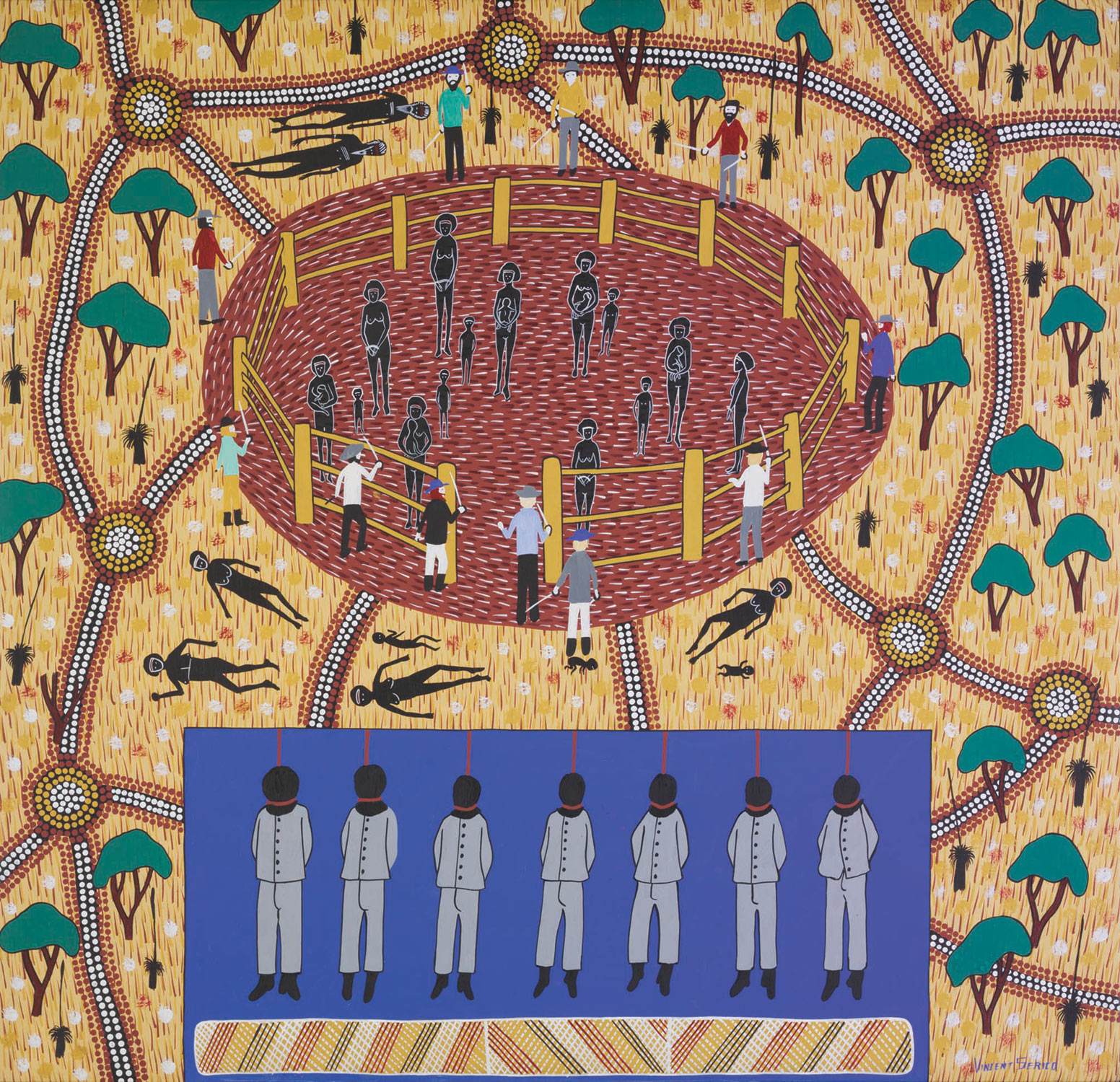Colonisation and Australia being claimed as Crown Land led to government control and attempts to diminish Aboriginal culture. Early colonial governments attempted to assimilate Aboriginal peoples into British culture, however they quickly abandoned these efforts, switching to a policy of segregation.
As the size of the colonial population increased, it also put a strain on food sources for Aboriginal people who were hunters and gatherers of traditional foods on Country – death by starvation was documented early in colonisation. At the same time, there were increasing instances of British violence, such as massacres, poisonings and the spreading of diseases. The Aboriginal population had never been exposed to these diseases and infections and therefore had no immune defence against them.
Aboriginal peoples resisted, attempting to defend their land and kin, and to stop the destruction of their sacred sites. They targeted farms and buildings, to delay and disrupt colonial expansion.
Historians have documented more than 300 massacres and poisonings across Australia between 1788 and 1930. This interactive map shows colonial frontier massacres from 1780 to 1930. One of the most well-known massacres occurred in Myall Creek in north-east NSW in 1838. European settlers massacred at least 28 women, children and men. The murderers were brought to trial and punished, which was rare, with many people believing it was not an offence to kill Aboriginal people. Seven of the 12 men found guilty were hanged.

Myall Creek Massacre - Courtesy of the Estate of Vincent Serico and Fireworks Gallery.
